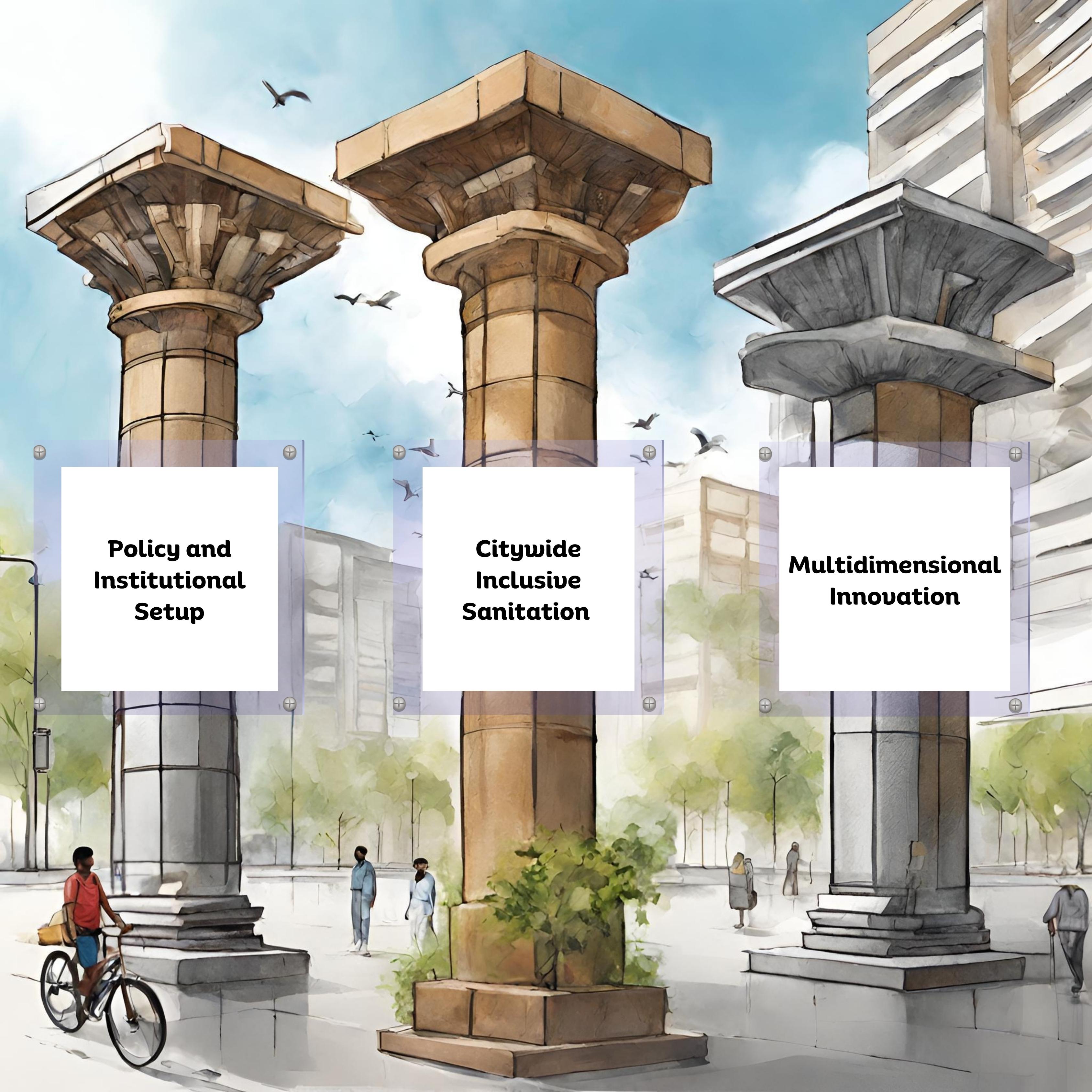On September 12 and 13, the South-by-South Knowledge Sharing Event in Nepal responded to a question: ‘where are we now?’. Ten years ago, the urban sanitation sector was facing significant gaps and a lack of attention from governments, donor agencies, and practitioners. That has changed in recent years, thanks to the efforts of various stakeholders who have been driving the process of improving sanitation services. In this article, we will highlight three essential pillars for addressing the urban sanitation challenges, presented by Mr. Brian Arbogast, Director, Water, Sanitation, & Hygiene of the Bill & Melinda Gates Foundation. The three pillars are: (1) policy and institutional set up at the country level, (2) Citywide Inclusive Sanitation at the city level, and (3) innovation across multiple dimensions.

Policy and Institutional Set Up at the Country Level
One of the key factors for achieving sustainable and equitable sanitation outcomes is having a solid policy and institutional set up at the country level. This means having a clear vision, strategy, and targets for urban sanitation, as well as a conducive legal and regulatory framework, adequate financing mechanisms, and effective coordination and accountability structures. Some countries have made significant progress and set benchmarks in this regard, such as India and Nepal.
Citywide Inclusive Sanitation at the City Level
The second pillar is adopting the Citywide Inclusive Sanitation (CWIS) approach at the city level. CWIS is a public service approach to advance equitability, safe and sustainable outcomes. It focuses on service provision and its enabling environment, rather than on building infrastructure. This requires a shift in mindsets from conventional sewerage systems to more diverse and context-specific options that can cater to different segments of the population.
CWIS approach strengthens the core functions of responsibility, accountability, resource planning and management of public systems. This means having a clear vision and strategy for urban sanitation at the city level, as well as effective governance structures that can coordinate among different actors and sectors. It also means having adequate financial resources that can cover both capital and operational costs of sanitation services, as well as mechanisms to ensure cost recovery and affordability for users.
Innovation Across Multiple Dimensions
The third pillar for advancing urban sanitation is fostering innovation across multiple dimensions. Once we embrace the responsibility of providing sanitation services to everyone in the city, we will need to innovate in toilet technology and investing in business models that invites private sectors to grow. Technology innovation refers to developing new or improved solutions that can address specific challenges or opportunities in urban sanitation. For example, turning toilets to recover wastewater and feces onsite. Another example is using mobile applications that can connect customers with pit emptiers, track fecal sludge movements, and provide feedback on service quality. Business model brings new or improved ways of creating, delivering, and capturing value from urban sanitation services, attracting the private sectors involvement.
The urban sanitation sector is transforming, driven by the will to achieve the SDG 6 and the recognition of the need for new approaches. The three pillars of policy and institutional set up, citywide inclusive sanitation, and innovation are essential for addressing the urban sanitation challenges in a holistic and sustainable manner. However, there is still a lot to learn and do to make this transformation a reality. We hope that this article can contribute to the sharing of thoughts and experiences, and we look forward to hearing your opinion.
